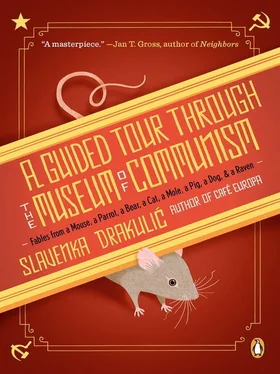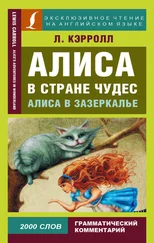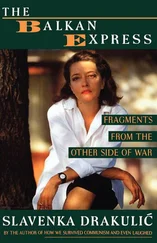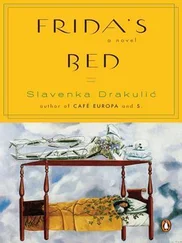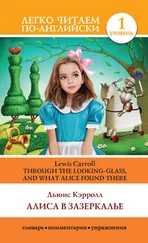You will notice that she does not write further of this highly unusual “case” or of this “patient.” That is strange to me (or not strange; it’s indeed logical, depending upon what interpretation you prefer). Had Raven been a true patient, there would have been plenty of material to analyze and write about in scientific publications or conference papers. Why did she stop writing about him so abruptly?
Well, in a way she did not stop. She continued to write about the suicide of the minister. But from another, public side this time. Mother wrote about the real case that had actually motivated her patient—the visitor, witness, or whatever he was—to visit her:
Sure enough, during the next few days the suicide of the prime minister was in the news: The prime minister had been found dead at his home; he had killed himself as the result of a “nervous breakdown.” The news report was short and scarce of details. Therefore, as usual, gossip filled the space left by the news. There were so many gossips in town; his death shook the place almost like an earthquake. Of course, the official story was that he was suspected of collaboration with the so-called enemy forces of the KGB, the CIA, UDBA, and whatnot.
The unofficial story, however, was that one of his three sons was engaged to marry a girl from a highly suspicious background: Her family had relatives in America. At first there was no obvious reaction to the news of the engagement, but then the buzz started: What was the meaning of the prime minister allowing such an act? It was not a simple act of engagement like any other. Being so highly positioned in the Communist Party and the state hierarchy carried certain obligations in his private life, a great responsibility indeed. Therefore, the main question was how to interpret the engagement of the prime minister’s son with a person from a politically “wrong” family—since a family was still an important feature of individual identity in Albania. In a country that prided itself on never giving in to “enemy” bourgeois ideology, could this engagement be a sign of liberalization? On the other hand, it could be just the opposite, a sign of the weakness of the class struggle, an error of judgment by the minister, perhaps a, for him, fatal error.
After only a couple of weeks, however, the prime minister had canceled the wedding. In doing so he demonstrated that his loyalty to the party came first and to his family only second. To admit his misjudgment in public was no small thing to do, yet he thought that he would thus save face. After all, he was the number two man in power; this gesture should have meant something…
However, after a few months of speculation it became obvious that the first secretary had decided to interpret the engagement as a sign of weakness. The old Communist should have known better than to give in to his son’s desire to marry into such a highly unsuitable family, it was rumored to be said. He’s become too soft, too bourgeois, it was whispered. If he cannot control even his own son—how is he supposed to lead the whole country one day?
The minister, indeed, seemingly had lost his grip on power, because the essence of power is control.
A tragic love affair, Romeo and Juliet, some said afterward. But in Albania no one was preoccupied with what happened to the youngsters. Should one indulge the feelings of two youngsters when the security of the state could be at stake? Was it worthwhile to make such a risky decision? Surely the successor was aware of the problematic family when he approved the engagement? If he was not, it speaks even more against him as a future first secretary. The first secretary as a matter of principle should not trust anyone, not even his friends, much less a family with such suspect members. Rather, he should have followed good old Stalinist credo: Trust is good—but control is better.
It was also said that, although the first secretary—the minister’s old comrade in arms and friend—was worried about such a development, he said nothing to him. The first secretary was so worried that he suggested a meeting of the Politburo. He decided that the Politburo should deal with this; it should present the problem of the prime minister and give him an opportunity for self-criticism. Surely he would come to his senses; this method always worked. And so the session was convened. As usual, such meetings went on for a few days. Just when the prime minister’s turn came to speak, the meeting ended; it was supposed to continue the next day. Most probably, the first secretary would forgive his friend and successor, the boy would not marry the girl, and that would be it. But the next meeting did not take place. This was fatal for the minister…
Yet one cannot but wonder: Was it perhaps postponed in order to make it fatal?
That night, the night between the first and the second meetings, the minister committed suicide, or “suicide.” It seems that he did not believe that the first secretary would forgive him. He knew his old comrade and friend better, he knew his cruelty—which had escalated with the attacks of acute paranoia he had been experiencing lately, apart from the diabetes and cerebral ischemia he was suffering from. I heard about it in conspiratorial tones from my colleague at the hospital who treated him—we all knew about his paranoia but were not allowed to mention it. The first secretary suffered from insomnia and hallucinations, apart from persecution mania, said my colleague, rather worried about the political consequences his mental state could have. He told me this just a month or so before the whole event—and voilà, there it is, the political consequence, a grand display of his sheer madness!
But then, again, there are people who love conspiracies, and they said something completely different: that the whole affair had been orchestrated. The engagement was only a pretext, a good motive for the first secretary to get rid of his main rival. In other words, it was an inner battle for power.
Therefore, a decision about his funeral must have been highly problematic: where to bury such a person—in the Martyrs’ Cemetery or not? If yes, what was the message? If not, what was the message? Should it be a civilian funeral or not? So many questions… Previously, in a similar case of suicide by a Politburo member, the corpse was buried and exhumed five times! In the end, the minister was not given an official funeral; this status was indicated by the absence of official speeches and any gunfire salute. After a while, his body disappeared from his grave…
As a result of the whole sordid affair, not only the prime minister but also his whole family was arrested without any explanation. His wife and three sons were imprisoned. One son committed suicide. He could not stand torture, I heard. The mother died in prison, and the two other sons are still serving a prison sentence.
In a note from 1985, Mother added that the investigators found two, not one, sheets of paper. One was a letter to his family and the other was a sheet inscribed with only two lines from an old Albanian folk song:
O ju korba qe me hani
syte e zi mos mi ngani.
[Oh, you ravens devouring me
don’t touch my black eyes]
“It is not clear why this second sheet was not mentioned before,” she commented. Or did it, in some way, point to the possibility that he had been forced into suicide? My mother, it seems, concluded that this definitely confirmed her suspicion of Raven’s role in it all. By the way, on a separate sheet that she perhaps added to the notebook later on—she wrote in red pencil: “I heard from a reliable source that an investigation was launched into his suicide. Allegedly, a man was seen entering the minister’s house late that night. The official report states that his face could not be recognized because of the heavy rain. It is only known that a dark, tall man dressed in black left the house in the early morning hours, walking hastily toward the city. ‘His black coat flew in the wind like the wings of a bird,’ the report added.”
Читать дальше
